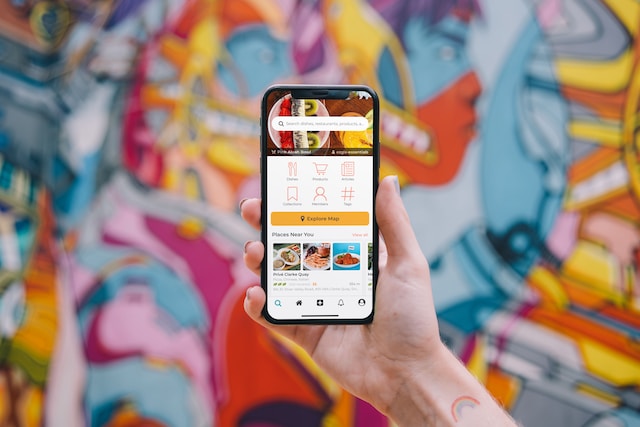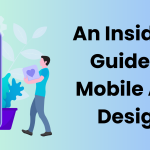In today’s fast-paced digital era, mobile apps have revolutionized the way we live, work, and connect with others. Mobile applications have ingrained themselves into every aspect of our everyday lives, from productivity and entertainment to health and finance. However, the path to creating a successful mobile app and its engaging design is not a simple one. It requires meticulous planning, thoughtful-provoking steps, and a deep understanding of user needs.

Some questions may pop into your mind such as how to get it all started? What are the steps involved? Should I hire more people for the project? Or will I be able to accomplish it all alone?
We are trying to answer all such questions in this article. So, roll up your sleeves and get to read it.
In this article, we will delve into the three key stages that a mobile app development agency can leverage to play a vital role in the success of the
app design. By exploring the research and conceptualization, design and iteration, and development and launch stages, you will gain valuable insights on how to create an app that not only stands out from the competition but also provides a seamless and delightful user experience.
Research and Conceptualization:
The first stage of mobile app design, research and conceptualization, lays the foundation for a successful app. It involves understanding the problem or need that your app aims to address and conducting research to gather insights. Here’s a deeper explanation of the key steps:
- Identify the Problem: Start by stating the issue or need that your app aims to address clearly. Research the target audience and understand their pain points. This will help you shape the purpose and goals of your app, ensuring that it addresses a real-world problem.
- Competitive Analysis: Analyze existing apps in the market that tackle similar problems. Assess their advantages, disadvantages, and selling points. This study aids in the discovery of potential for distinction, allowing you to successfully position your app.
- User Personas and User Stories: Make specific user personas that reflect the various groups of your target audience. These personas should encapsulate the characteristics, preferences, motivations, and behaviors of your users. Additionally, develop user stories to visualize how users will interact with your app and achieve their goals. This process enables you to understand your customer’s needs and create an app that meets them.
- Wireframing and Prototyping: Begin the visual representation of your app’s structure and layout through wireframing. Wireframes are simplified blueprints that outline the app’s screens and functionalities. Create interactive prototypes that mirror the app’s functionality and user flow using prototyping tools. These prototypes are invaluable for testing and validating design choices, as well as gathering early feedback from potential users.
Design and Iteration:
Once you have a solid foundation, it’s time to move into the design stage. This is where you bring your app’s visual identity to life while ensuring a seamless user experience. Think about the following elements:
- UI and Visual Design: Create a visually appealing UI that complements the branding of your app and speaks to your target market. Pay attention to color schemes, typography, and iconography. Make sure the design aspects are logical and consistent.
- Navigation and Information ArchitectureDesign a coherent and user-friendly navigation flow for the app’s interface using information architecture and navigation. Group related features and content together, and prioritize essential functions. Incorporate user feedback to refine and optimize the user interface.
- Usability Testing: You can find out areas of improvement by conducting usability tests over a handful of people. Gather feedback on the app’s usability, user interface, and overall experience. Repeat the process of design creation by incorporating the feedback.
- Responsive Design: With the diverse range of mobile devices and screen sizes, ensure that your app is responsive and adaptable. Test the app on various devices to guarantee a consistent experience across different platforms.Development and Launch:
The final stage involves the actual development and launch of your mobile app. This is where your imagination becomes a reality. Here are the key considerations:
- Agile Development: Adopt an agile development methodology to efficiently build your app. Break the development process into sprints, allowing for iterative improvements and flexibility.
- Cross-Platform Compatibility: Choose whether your programme will be created as a cross-platform app or for a single platform (like iOS or Android). Ensure compatibility and performance optimization for each targeted platform.
- App Store Guidelines: Familiarize yourself with the guidelines and requirements of the respective app stores (e.g., Apple App Store, Google Play Store). Comply with the guidelines to increase the chances of app approval.
- Beta Testing and Feedback: To get feedback and find any lingering problems, run beta testing on only a handful of people. Address the feedback and make necessary improvements before the official launch.
Bottom Line:
In conclusion, designing a successful mobile app is a multifaceted process that involves careful attention to detail and a user-centric approach on part of a mobile app development agency. By following the three key stages, you can significantly increase the chances of creating a mobile app that resonates with your target audience and achieves success in the ever-evolving app market. Remember to conduct thorough research, incorporate user feedback, and iterate on your design to create an app that solves a problem, provides a visually appealing interface, and delivers a seamless user experience. With dedication, perseverance, and a focus on these key stages, your mobile app has the potential to make a lasting impact and resonate with users in an increasingly mobile-driven world.





